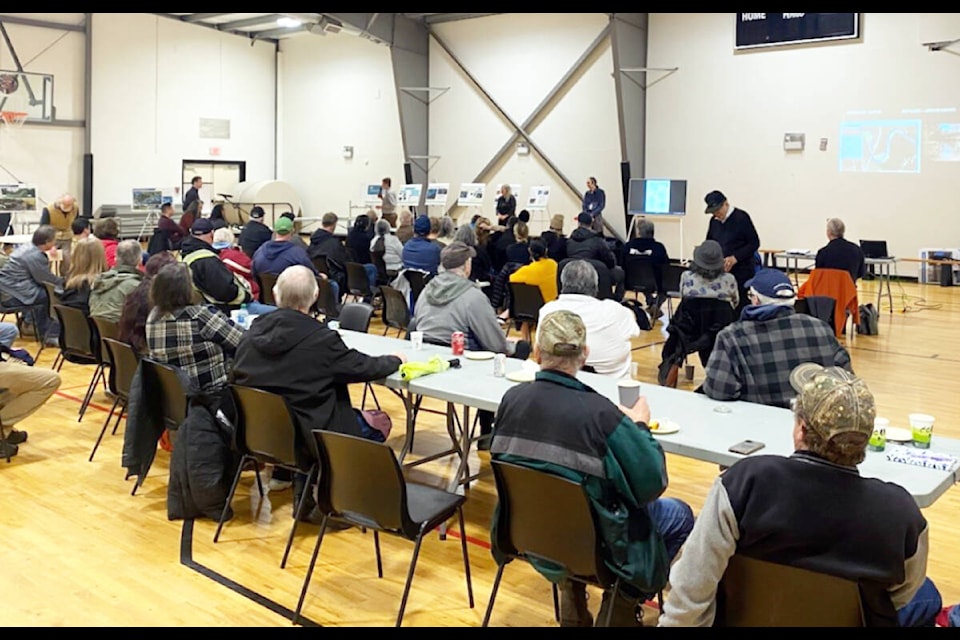Heavy rain outside provided an ironic backdrop to a meeting inside the Halalt First Nation gymnasium Monday to update Halalt residents, others living along the Chemainus River and the public about flood mitigation efforts.
The consequences of global warming are well-known to residents of the area with frequent flooding, particularly during extreme weather events such as the massive atmospheric river that struck in November of 2021.
Chemainus River levels peaked in late October this year after significant rainfall over two days toward the end of the month, but then dropped substantially during an unusually drier November. The river has since been on the rise again, especially following another downpour Monday.
“Everyone knows it’s flood season and there’s lots of things people can do to prepare themselves for that,” said Jeff Moore, the Cowichan Valley Regional District’s senior environmental analyst.
The open house included: staff from the CVRD, Municipality of North Cowichan councillors and mayor Rob Douglas, and representatives from Emergency Management Cowichan, Emergency Management BC, the Ministry of Environment and Climate Change as well as members of the Halalt First Nation and Penelakut Tribe.
Don Allingham, who’s lived along the river his entire life, wasn’t impressed with the information presented and the work that’s been done so far.
He called it a “lack of moving forward. Myself and the local neighbours, we’re all fed up with the lack of anything getting done.
“Being a farmer, something’s broke, you fix it. You don’t have consultants after consultants.”
It’s all just led to a lack of progress at this point, Allingham reiterated. “Everybody I’ve talked to, we’re just tired of these studies, ‘we’re going to study it some more.’”
Related story: Mapping of Chemainus River floodplain to aid in future flooding risks
During the session, the CVRD presented results of the flood management planning work done by Northwest Hydraulic Consultants; the Provincial Task Force provided an update on gravel removal in both 2022 and 2023 as well as a temporary flood barrier and right bank protection work; and the Halalt First Nation detailed its watershed initiative for restoring the ecological function of the entire watershed.
“The whole point of it mainly was to share some information with the public about the various projects that have been going on,” said Moore.
“A lot of the work that’s been done with the gravel removal and the temporary flood wall, that’s provincial funding,” he added.
The temporary flood walls have provided protection primarily for the Halalt First Nation with Hesco bags. Analysis prior to design determined the wall would significantly reduce flooding of Halalt land during smaller events, but not for large-scale events.
Planned future work at this point includes: protection of the right river bank downstream from the bridges over the Trans-Canada Highway. Structures called bendway weirs – submerged rock structures to intercept high-velocity flow and dissipate the energy that causes erosion – will be employed.
Design work hasn’t begun, but construction is expected during the summer of 2024 when water levels are lowest.
The approximate $4.5 million budget for the project is funded through the Ministry of Emergency Management and Climate Readiness. The Ministry of Environment and Climate Change Strategy will lead the project.
